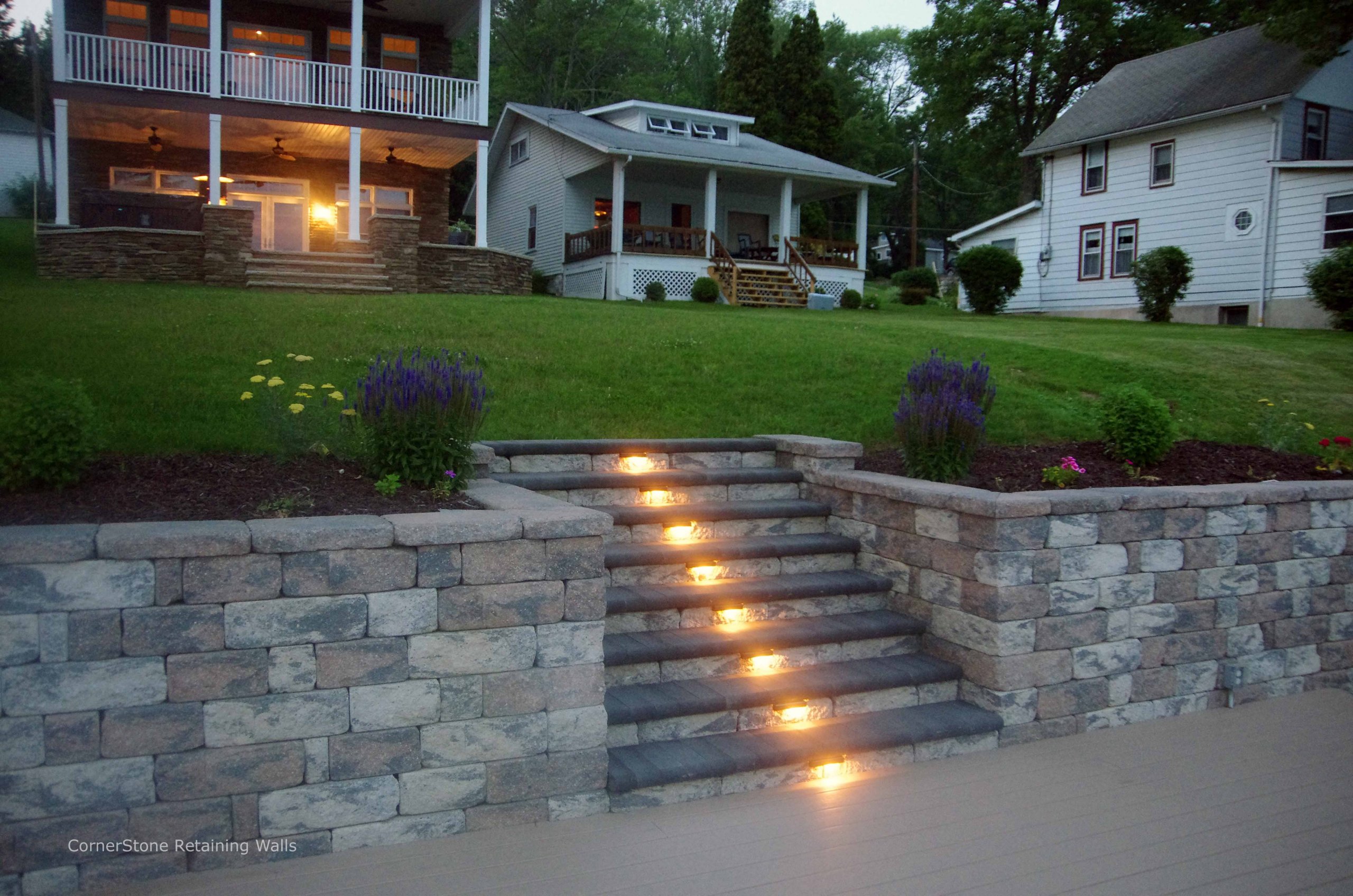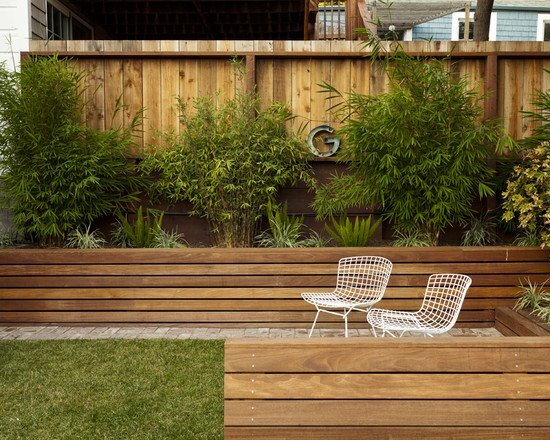Preserving Wall Surfaces Sunshine Coast: Innovative Solutions for Disintegration Control
Preserving Wall Surfaces Sunshine Coast: Innovative Solutions for Disintegration Control
Blog Article
Guaranteeing Structural Honesty: The Significance of Correctly Built Maintaining Wall Surfaces in Stopping Slope Failing
In the world of civil design and construction, the value of appropriately constructed preserving walls in avoiding slope failing can not be downplayed. By exploring the detailed interplay in between these elements, a deeper understanding of the crucial duty that preserving walls play in maintaining structural stability and preventing incline failure arises.
Duty of Retaining Walls in Stability
The necessity of retaining walls in ensuring slope security is critical in civil design practices. Keeping wall surfaces offer a critical role in stopping dirt erosion, managing water overflow, and keeping the architectural integrity of slopes. By supporting upright or near-vertical grade modifications, preserving wall surfaces aid to redistribute side stress applied by the dirt, thus reducing the threat of slope failure.
One secret function of maintaining wall surfaces is to neutralize the force of gravity acting on the soil mass behind them. This is achieved through appropriate style and building and construction, which considers factors such as soil type, wall height, water drainage provisions, and potential surcharge loads. By efficiently maintaining soil within defined boundaries, these structures help to stabilize slopes and protect against landslides.
Additionally, keeping walls contribute to the looks of landscapes while supplying practical advantages. They can develop terraced degrees for landscape design, assistance roads or structures on hillsides, and boost the general usability of sloped terrain. Fundamentally, keeping walls play a vital duty in keeping incline security and making sure the security and longevity of civil engineering tasks.
Factors Influencing Wall Surface Performance
Aspects that influence the performance of preserving wall surfaces include soil homes, wall layout, and outside tons. Soil homes play a vital role in establishing the stability and performance of a preserving wall. Elements such as dirt type, cohesion, inner rubbing angle, and groundwater conditions can influence exactly how well a wall surface maintains the dirt behind it. The design of the retaining wall surface is another vital element that affects its effectiveness. Correct wall layout considers variables like wall elevation, wall surface type (e.g., gravity wall surfaces, cantilever wall surfaces), reinforcement products, drainage systems, and construction strategies to guarantee the wall surface can withstand the side pressure put in by the retained dirt. Additionally, outside lots, such as surcharge tons from surrounding structures or web traffic, seismic pressures, and water pressure, should be meticulously reviewed during the style and building and construction phases to make sure the wall surface can properly withstand these exterior forces. By taking into consideration these factors adequately, engineers can build retaining wall surfaces that properly prevent incline failing and make sure lasting structural integrity.
Layout Considerations for Maintaining Walls
Including the critical aspects of dirt residential or commercial properties and exterior lots into the architectural style procedure is important for developing reliable retaining wall surfaces that guarantee slope security. When developing maintaining wall surfaces, designers must thoroughly evaluate the characteristics of the bordering soil, including its water drainage, compaction, and type residential or commercial properties. Understanding these dirt residential or commercial properties is critical for identifying the appropriate wall surface density, reinforcement, and height required to hold up against the lateral stress applied by the soil mass.
Additionally, exterior loads such as additional charge lots from nearby frameworks or website traffic, as well as seismic pressures, must be considered during the layout phase. These loads can significantly affect the stability and performance of a maintaining wall, necessitating the use of proper design techniques and products to reduce prospective failing risks.
In addition, the option of ideal products, such as concrete, rock, or hardwood, need to align with the aesthetic needs and site-specific problems. Factor of safety and security factors to consider, drain provisions, and construction strategies are also important facets that affect the total style and capability of preserving wall surfaces in protecting against slope failing. By meticulously considering these style considerations, engineers can ensure the structural integrity and long-lasting security of preserving walls.

Building Best Practices for Toughness
When creating keeping wall surfaces for optimal resilience and longevity, adherence to industry-standard methods and careful attention to information are critical. To make certain the sturdiness of a retaining wall surface, correct website preparation is necessary. This includes adequate compaction of the soil, proper drainage systems, and making sure the wall surface's structure is sound. Using high-grade products, such as cinder blocks or all-natural rock, is crucial for the long life of the structure. Additionally, employing competent professionals with experience in building preserving wall surfaces can dramatically influence the toughness of the end product.
Incorporating reinforcement techniques, such as geogrids or steel bars, can boost the structural stability of the retaining wall surface and stop potential failings. By adhering to these building best methods, preserving wall surfaces can hold up against the test of time and successfully prevent incline failing.
Importance of Appropriate Upkeep
Normal upkeep is necessary learn this here now for maintaining the structural stability and performance of keeping walls over time. To guarantee that retaining wall surfaces continue to execute their designated feature effectively, routine examinations should be conducted to recognize any type of signs of wear and tear.

Conclusion
In conclusion, retaining walls play a vital role in making certain structural stability and avoiding slope failure. By thinking about aspects influencing wall efficiency, adhering to create factors to consider, following building ideal techniques, and carrying out appropriate upkeep, the longevity of maintaining walls can be made best use of. Retaining Walls Sunshine Coast. It is essential to identify the relevance of appropriately built keeping wall surfaces in preserving stability and stopping possible risks connected with incline failure
Variables that influence the effectiveness of keeping walls consist of soil properties, wall layout, and external lots. Correct wall surface layout considers aspects like wall surface elevation, wall type (e.g., gravity walls, cantilever walls), support products, water drainage systems, and building techniques to make sure the wall surface can stand up to the lateral stress applied by the maintained soil. By considering these elements adequately, engineers can construct maintaining walls that effectively prevent incline failing and make sure lasting architectural integrity.
Upkeep jobs might consist of getting rid of drain systems to avoid water build-up behind the wall, repairing any type of noticeable splits or damage, and making certain that the wall is totally free from greenery that can put in pressure on the structure. By thinking about elements affecting wall effectiveness, adhering to design considerations, complying with construction finest techniques, and implementing proper additional hints upkeep, the sturdiness of retaining wall surfaces can be made the most of.
Report this page